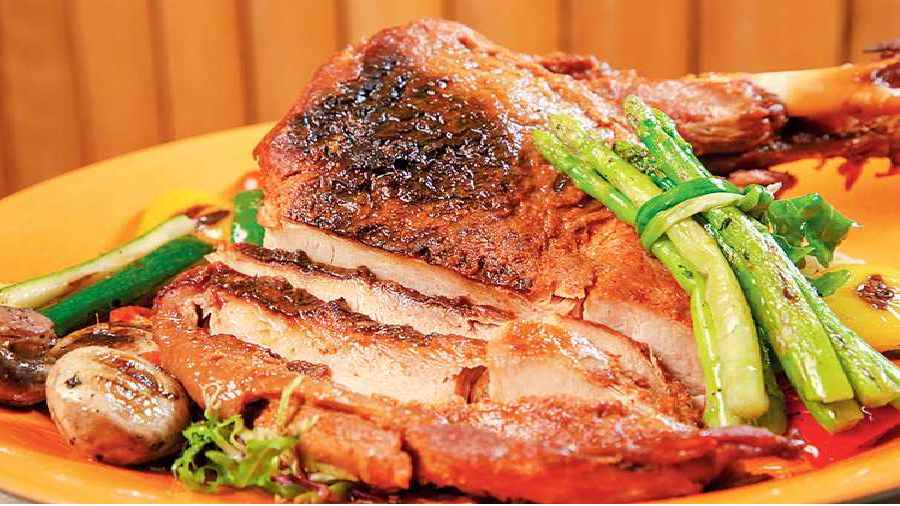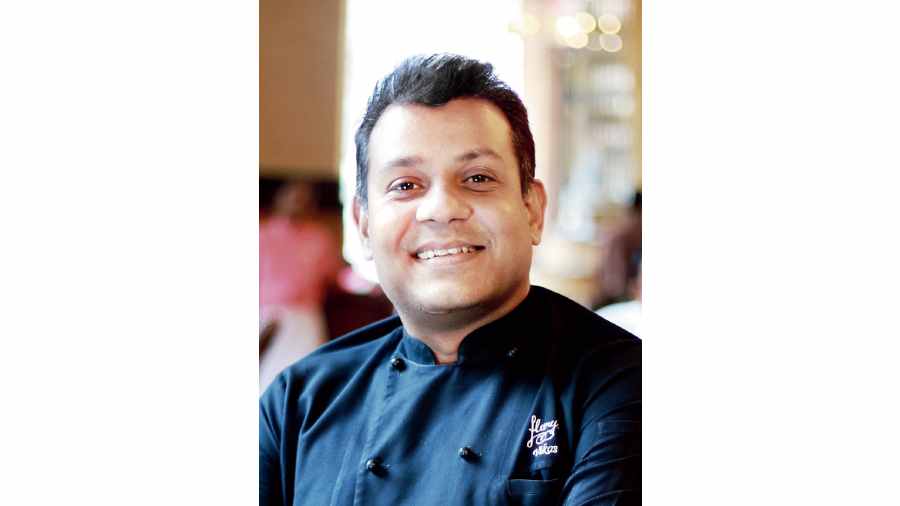That time of the Year
So, we’re well and truly into the ‘holiday’ season as observed in many Western countries. In India too, especially in Calcutta, Christmas is celebrated with the same enthusiasm and bonhomie as other festivals such as Durga Puja and Diwali and forms a part of the extended festive season, running into the New Year. To that extent, the Christmas season this year, complemented by a gradual and pleasant decrease in temperature and the upswing in customer confidence, which some term as ‘revenge consumption’, as well as people travelling more, has brought about rather pleasant and hopeful environs. I do hope that nothing disrupts it and that the season brings for all of us renewed hopes and cheerfulness and for businesses, especially food businesses, that see a large part of their yearly patronage come at this time of the year, a year full of great opportunities and excitement.
Christmas and Food
While all the festivals, big or small, all across the world have food as a major contributor to the celebrations, for Christmas, it is something that comes at the top of the table, literally and figuratively. While some Christmas dishes have become iconic and are enjoyed throughout the world, different regions of the world have entirely different foods based on the local climate and cultures. When we talk of mince pies, roast turkey or plum cakes, we must also appreciate that in countries like Japan, Fried Chicken is the most popular Christmas delicacy and people have to book months ahead to have that.
The season also plays a great role and depending on where you live, you might have salted cod, potato pancakes, or corn Tamales as your staple of the Christmas supper. Nonetheless, food and festivity are inseparable and in this column, I will discuss a few iconic Christmas dishes that have come to be recognised as enduring symbols of Yuletide mirth and merriment.
At Flurys, we have a special Christmas menu every year and we see multitudes of diners enjoying many of these delicacies and carrying on the cultural and culinary traditions of the season.
The Turkey

The Plump, glistening Roast Turkey has become a poster bird, as it were, of all Christmas menu merriment and is eaten all across the world during the season. However, it will be rather interesting to note that the famous British tradition of ‘Christmas Turkey’ as a Christmas main course, along with the elaborate sauces and accompaniments, is a relatively recent phenomenon compared to the many other Christmas traditions that exist to date. In fact, the tradition of Christmas Turkey is reported to have appeared for the first time in the 16th century, before which boar, capon, goose or even peacock was served at Christmas tables. It is said that King Henry VIII was the first English monarch to have turkey for Christmas. The tradition of Turkey at the Christmas feast then grew rapidly in the British colonies where it exists even to this date.
The Glazed Ham
Another very popular main course choice of meat-eating diners across the world is the Glazed Ham and that has a story of its own. In the Tudor period that extended from 1485 to 1603 in England, it was a tradition to have the head of a wild boar as an edible centrepiece, which was said to have been reminiscent of a pagan tradition to honour the goddess ‘Freys’ who was associated with boars. Over a period of time, the showy boar head gave way to the humbler ham, which was more easily available, eventually now culminating into the tradition of the ‘Yule Ham’. In many households in the Western world, Ham Leg is eaten predominantly for Christmas while turkey is had for Thanksgiving. It is common to marry sweet and salty flavours in the Christmas ham and sweet elements such as honey, pineapples, cherries and even peaches are used to intensify its flavour.
The Gingerbread

One of the most alluring signs of the Christmas season merriment is the ubiquitous Gingerbread Man, staring at all and sundry with his candy eyes and charming children with the literally sugar-coated smile. The earliest mention of gingerbread can be found in the ancient Greek and Roman mythologies where it was used it for ceremonial purposes. In the 11th century, the crusaders brought many spices to Europe from the Middle East, including ginger and these were highly prized and were used only in the kitchens of the kings and the noblemen. In early available recipes, the gingerbread consisted of breadcrumbs, almonds, honey and ginger and the resultant paste was pressed into wooden moulds before being baked in stone ovens. Later on, the breadcrumbs were replaced with flour and eggs and sweeteners were added.
The first Gingerbread Man is said to have been made in the kitchens of Queen Elizabeth I, who is said to have presented these to the visiting dignitaries, looking like themselves. It is also said that the strong smell of the gingerbread spices could mask the heavy odours of the meats served in the banquets, many of which started to smell off due to the weather and non-availability of refrigeration. Today, gingerbread is made in many forms and shapes and eaten or gifted during the festive season, most noticeably in Europe and America.
The Plum Pudding

Across all the Christmas buffets the world over, where many of the dishes change based on the cultures and preferences, one thing remains common, the hallowed plum pudding, usually with accompaniments of brandy sauce, brandy butter or custard. The plum pudding, also known as the ‘Christmas Pudding’, is said to have originated in 14th century England as a sort of porridge called ‘frumenty’. Originally made with hulled wheat and boiled in milk, this porridge was generally eaten early on Christmas Day by the faithful that observed fasts on the days preceding Christmas. In the 17th century, the recipes changed and the pudding became richer and more decadent. It is also said that the tradition of eating plum pudding started with the decree of the Roman Catholic Church to make a 13-ingredient pudding to represent Jesus and his apostles.
The Christmas Eggnog
While we have discussed two each of savoury and sweet dishes that signify Christmas, I thought it would be a good idea to add a drink to the list, well, if you could call it that. In its simplest form, the eggnog is a rich, warm milk-based thick drink that is only one of its kind and has stood the test of time. Made with milk, cream, raw egg yolks, various spices and alcohol, eggnog is a perfect end to a sumptuous Christmas supper and then some. While it is not established as to how exactly this true concoction of egg and cream came into being, it is believed that the eggnog originated from the milk-like drink called ‘posset’, which was quite popular in medieval Britain and was used as a warming, intoxicating drink, also signifying prosperity and good health.
Eggnog became more popular in the American colonies which had great availability of cheap milk and especially rum, which came to become one of the most important ingredients of the alcoholic concoction. The name ‘eggnog’ is said to have come as a combination of egg, the essential ingredient, and ‘noggin’ which means a wooden cup or ‘grog’, a famous strong beer.
RECIPE
While we have discussed some of the most popular Christmas dishes and a bit about their history, the recipe I am giving today is that of another Christmas favourite, one that has become synonymous with Christmas celebrations throughout the world, especially in India. Come Christmas season and you’re likely to find almost all bakeries, big and small, come out with their version of this Christmas favourite cake and stock these in large numbers. At Flurys, this cake is among the most popular in our Christmas cake menu and we sell thousands of these each year. The fact that this cake looks ‘royal’ owing to its ‘crown’ of blanched almonds placed concentrically on top makes it a good choice for Christmas special gatherings and dinner tables. Here goes the recipe:
The Authentic Scottish Dundee Cake

Ingredients:
• Brown sugar: 125g
• Butter: 125g
• Egg: 3
• Flour: 100g
• Ginger powder: 5g
• Cinnamon powder: 3g
• Nutmeg powder: 2g
• Almonds: 100g
• Tutti Frutti, mixed peel, dry cherries, sultanas: 60g each
• Rum, brandy: 50ml each
• Almond powder: 50g
• Blanched halved almonds: 100g
Method
1. Soak all the dry fruits in the alcohol for at least 2-3 hrs, the longer, the better.
2. Cream together the butter and the brown sugar, until light and fluffy.
3. Add the eggs, one at a time, mixing between each addition.
4. Fold in the flour, almond flour and all the dry spices.
5. Mix in the liquor-soaked dry fruits, put the batter in the cake mould and arrange the blanched almonds in a tight concentric circle as shown in the picture.
6. Bake at about 160ºC for about one hour, check for doneness by inserting a skewer; if it comes out clean, the cake is ready.
7. Cool on a wire rack, wrap in a cling film when cold. This cake can keep up to a month if stored in a dry, cool place.
This cake should be made at least 15 days before the day you want to eat it for the flavours to develop. This is also called the ‘ripening’ of the cake. As with any other recipe that I share through my columns, I encourage you to use your own combinations, a little bit extra of this and a little bit lesser of that based on your taste preferences. I have used alcohol liberally here as all Dundee cakes worth their spirit must, but you can completely avoid it for a booze-free version.
Since Dundee cakes are quite heavy, their proper baking is of prime importance, if the cakes are not baked properly they will not last long and will not taste right with the spices remaining raw. Take out the cakes only when completely done, plum cakes are quite forgiving if baked longer, and it is often a good idea to leave those in the oven a wee longer than mandated in the recipe.

Vikas Kumar is the executive chef of Flurys. You can reach him at vkumar@flurys.com
